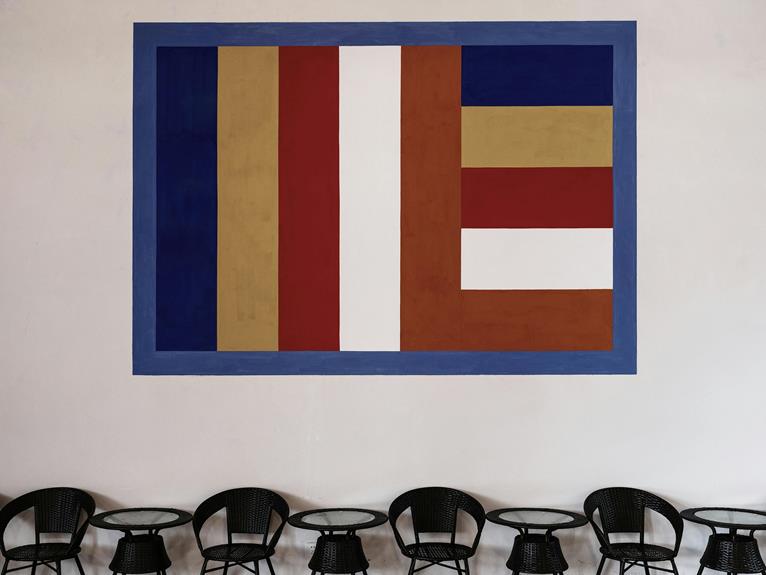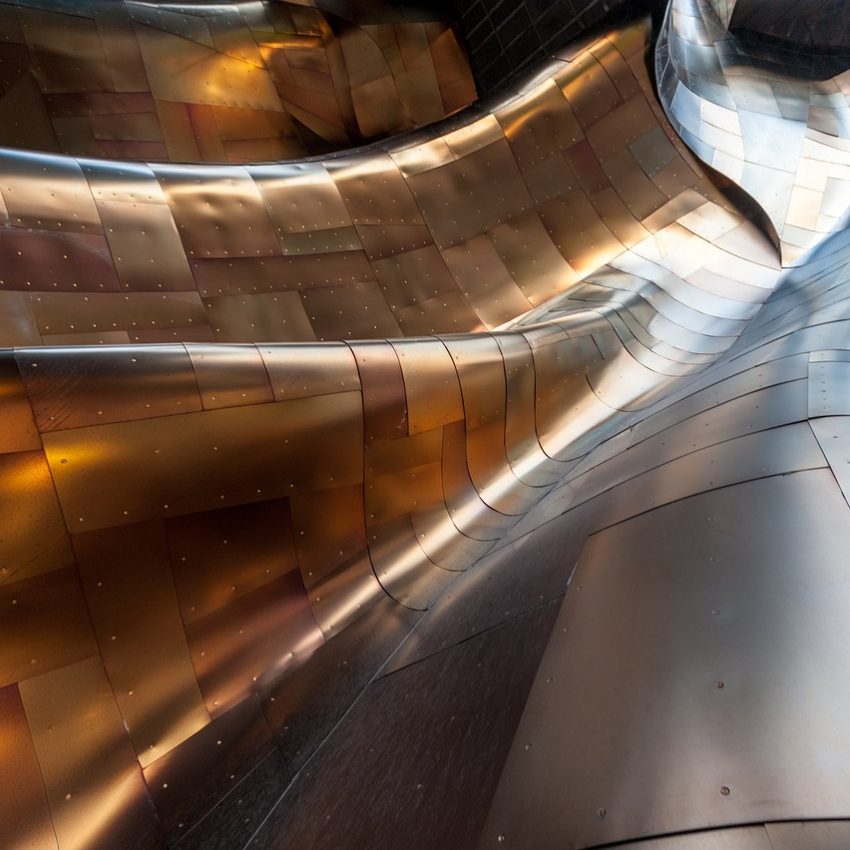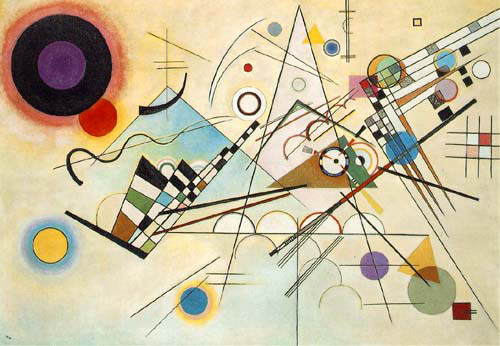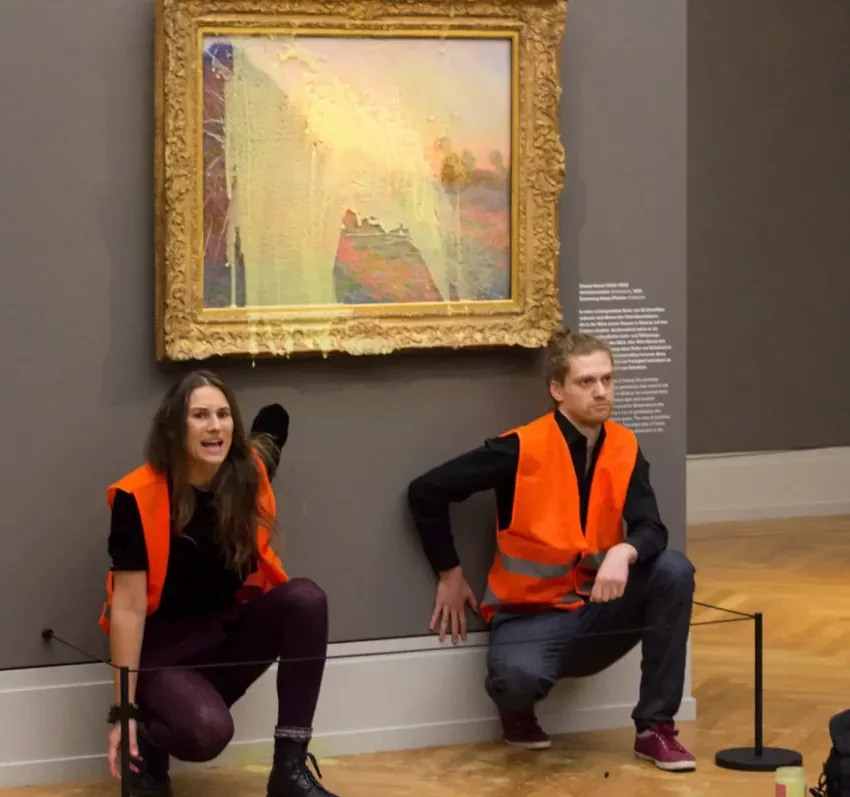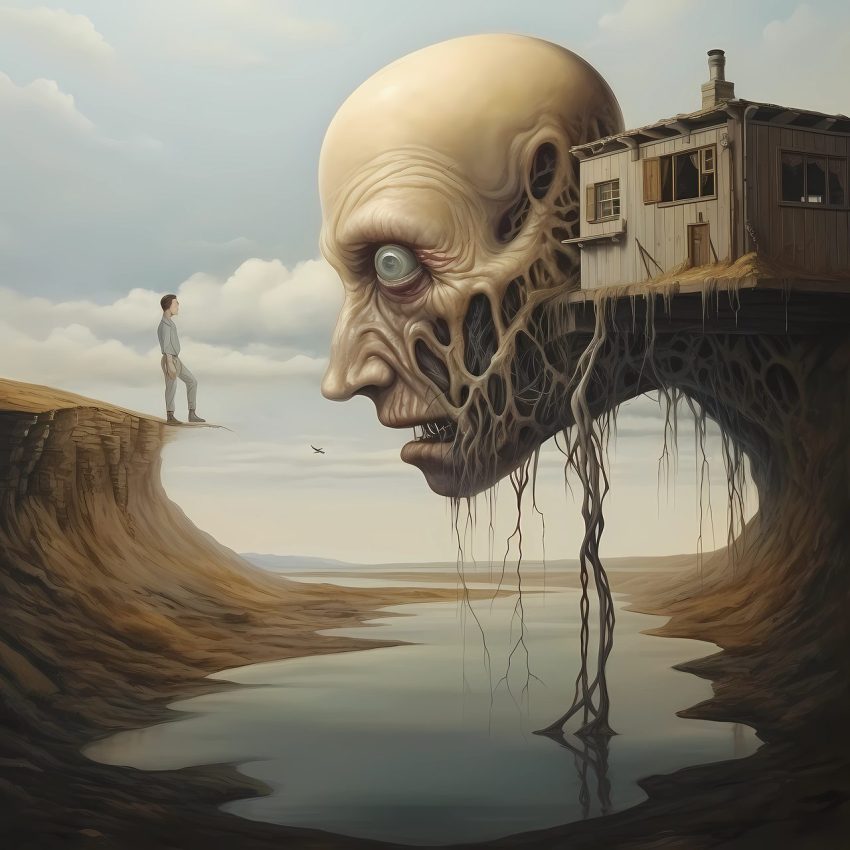Gesamtkunstwerk
The Total Work of Art
Exploring the concept of Gesamtkunstwerk
Gesamtkunstwerk is a German term meaning total work of art, captures the essence of a multidisciplinary approach to artistic creation. Coined in 1827 by the German philosopher and writer Karl Friedrich Ernst Trahndorff and then later used by composer Richard Wagner in the 19th century in his essays, this concept aims to unify multiple art forms into an integrated and harmonious whole.
The concept of the Gesamtkunstwerk was conceived in Trahndorff’s essay Aesthetic or Theory of Worldview and Art (ästhetik oder lehre von weltanschauung und Kunst).
From opera performances that combine music, drama, and visual design to immersive theatrical experiences that blur the boundaries between audience and performer, Gesamtkunstwerk seeks to evoke a holistic sensory experience that transcends individual art forms.
One can see echoes of Gesamtkunstwerk in modern multimedia artworks where technology is seamlessly integrated with traditional artistic expressions.
Virtual reality installations, interactive digital exhibitions, and transdisciplinary collaborations amongst artists are pushing the boundaries of what constitutes a total work of art, foreshadowing the digital artwork of the future.
As we delve deeper into exploring Gesamtkunstwerk in contemporary contexts, it becomes apparent that the blending of diverse mediums not only enriches the aesthetic experience but also challenges conventional notions of art categorization and consumption.
In embracing Gesamtkunstwerk, artists are afforded greater freedom to experiment with unconventional combinations of soundscapes, visuals, narratives, and spatial elements.
By fostering collaborative dialogues across different artistic disciplines and engaging audiences in multisensory encounters, this concept serves as a gateway to new realms of creativity and innovation in the ever-evolving landscape of contemporary art.
Origins: Tracing the roots of Gesamtkunstwerk
As we delve into the origins of Gesamtkunstwerk, the concept of total work of art, we are transported back to 19th-century Germany. It was in this era that Richard Wagner popularized the idea of combining multiple art forms like music, theater, and visual arts to create a unified and immersive experience for the audience. Wagner’s vision was revolutionary at the time, as it challenged traditional notions of artistic boundaries and segregation.
The roots of Gesamtkunstwerk can also be traced to ancient Greece, where performances like Greek tragedies seamlessly integrated elements of music, dance, poetry, and visual arts, embodying an early form of the totality that Wagner would later conceptualise with Der Ring des Nibelungen.
This interdisciplinary approach to art had a profound impact on later artistic movements and laid the foundation for the holistic concept of total artwork, paving the way for future interpretations in modernist art and architecture. By studying these historical connections, we gain a deeper understanding of how Gesamtkunstwerk continues to influence contemporary art practices around the world.
Richard Wagner The German Opera Composer
Richard Wagner’s concept of Gesamtkunstwerk exerted a profound influence on numerous artists throughout the 19th and 20th centuries. Movements such as the Arts and Crafts Movement in Scotland and England, spearheaded by figures like Charles Rennie Mackintosh and William Morris, as well as the Wiener Werkstätte in Austria, led by Gustav Klimt, Josef Hofmann, Otto Wagner, and Adolf Loos, all shared concerns about the impact of industrialisation on the artisan’s craft.
Similarly, the Bauhaus, under the direction of Walter Gropius in Dessau, Weimar, Berlin, and Chicago, and the Secession movement in Dresden, including Die Brücke (The Bridge), were dedicated to fostering environments where all artistic disciplines could converge harmoniously.
Their collective efforts aimed at preserving and revitalizing artistic traditions in the face of the growing threat posed by mass-produced goods, ultimately seeking to recreate an environment where all forms of art could flourish together.
Ancient Greek Theatre
Ancient Greece profoundly influenced Gesamtkunstwerk through its interdisciplinary approach to theatrical performances, particularly in Greek tragedies, anticipating Wagner’s concept of the artwork of the future in opera and drama. These productions seamlessly integrated music, dance, poetry, visual arts, and architecture to create immersive experiences for audiences.
Greek tragedies, staged in amphitheaters like the Theater of Dionysus in Athens, combined various art forms to captivate audiences. Playwrights such as Aeschylus, Sophocles, and Euripides crafted narratives accompanied by live music, elaborate costumes, and masks, enhancing the visual and auditory spectacle.
Music played a central role, with live musicians providing accompaniment and interludes between acts. Choreographed dances conveyed emotions and depicted scenes, complementing the narrative and engaging the audience.
Visual arts, including painted backdrops and architectural elements, created immersive environments, while the theater’s design fostered a communal experience between performers and spectators.
The holistic approach of Greek theater laid the groundwork for Gesamtkunstwerk, emphasizing interdisciplinary collaboration and immersive storytelling. This synthesis of artistic disciplines continues to inspire contemporary artists, showcasing the enduring influence of ancient Greek culture on the concept of total artwork.
Key Features: Elements that make up Gesamtkunstwerk
Gesamtkunstwerk is a term often associated with the ideal of total art, combining various artistic disciplines to create a cohesive and immersive experience. Key features that make up Gesamtkunstwerk include the fusion of music, drama, visual arts, and sometimes even architecture to create a unified work of art. Each element contributes to the overall narrative and emotional impact of the piece, resulting in a harmonious blend that engages the audience on multiple sensory levels.
One essential aspect of Gesamtkunstwerk is the seamless integration of all artistic components to convey a singular vision or theme. This holistic approach challenges traditional boundaries between different art forms, allowing for new creative possibilities and connections. By intertwining diverse elements such as sound, space, light, movement, and text, Gesamtkunstwerk offers a rich tapestry of sensations that envelops viewers in an immersive world where every detail plays a crucial role in shaping the overall aesthetic experience.
In essence, Gesamtkunstwerk represents a collaborative effort where artists from various disciplines come together to create something greater than the sum of its parts. It transcends individual mediums to form an interconnected network of expressions that resonate with audiences on both intellectual and emotional levels. By embracing this inclusive approach to art-making, Gesamtkunstwerk opens up endless opportunities for innovation and experimentation in exploring the boundless possibilities of interdisciplinary creativity.
In Architecture
The concept of Gesamtkunstwerk in architecture refers to circumstances where an architect oversees the design of a building’s entirety, including its shell, accessories, furnishings, and landscape. While the term itself wasn’t used until the late 20th century, its essence can be traced back to earlier periods. During the Renaissance, artists like Michelangelo didn’t see a strict division between architecture, interior design, sculpture, and painting. Historian Robert L. Delevoy suggests that Art Nouveau, with its focus on decoration, naturally lent itself to the idea of the architectural Gesamtkunstwerk. However, it’s also possible that the concept arose from social theories stemming from concerns about industrialization.
Evidence of complete interiors embodying the concept of Gesamtkunstwerk predates the 1890s. In the 18th and 19th centuries, architects increasingly sought control over every aspect of their commissions, extending their role to include not just the structure but also interior features like furniture, carpets, wallpaper, and lighting. Architects such as Robert Adam and Augustus Welby Pugin exemplify this trend of creating a harmonious effect throughout the entire architectural ensemble, sometimes even extending to the selection or design of tableware.
Examples: Notable works embodying Gesamtkunstwerk
One notable example of Gesamtkunstwerk is the Sydney Opera House, a masterpiece by architect Jørn Utzon. The building’s design seamlessly integrates various art forms such as architecture, sculpture, and interior design to create a harmonious whole. The unique sail-like roofs of the opera house has become an iconic symbol not only of Sydney but also of the concept of Gesamtkunstwerk itself.
Another remarkable work embodying Gesamtkunstwerk is Walt Disney World in Orlando, Florida. Here, various elements like theme park design, landscaping, music composition, storytelling through animations and movies all come together to create an immersive experience for visitors. Disney’s commitment to detail and creating a complete sensory environment sets it apart as a prime example of Gesamtkunstwerk in modern times.
The Red House 1859
The Red House, a collaboration between William Morris and Philip Webb, epitomizes Gesamtkunstwerk. Named for its red brick walls and roofing tiles, it exudes a medieval charm with sloping gables and prominent chimneys.
What sets it apart is its simple yet solid design, rejecting excessive decoration. Morris and Webb meticulously crafted every aspect, from its rural Kent setting to interior fittings, aiming for a singular artistic masterpiece that could be seen as an English counterpart to the ideal of Gesamtkunstwerk realized at Bayreuth.
Constructed on an L-plan, The Red House reflects Morris’s attention to detail, especially in its varied windows. Collaborating with artists like Burne-Jones and Rossetti, Morris ensured that every feature reflected artistic craftsmanship, aligning with the ethos of Gesamtkunstwerk and the role of the painter and furniture designer in creating a holistic art experience.
Beyond being a residence, The Red House served as a vibrant center for the arts during Morris’s residency, influencing both the Arts and Crafts movement and the Pre-Raphaelites. Its example of Gesamtkunstwerk continues to inspire artists, blending architecture, interior design, and artistic embellishments seamlessly.
In the 1950s, architects Edward and Doris Hollamby renovated The Red House, restoring its former glory. Once again, it became a thriving hub for artistic endeavors, reaffirming its legacy as a testament to collaboration and artistic vision.
Ernst-Ludwig-Haus
The Ernst-Ludwig-Haus, designed by Joseph Maria Olbrich, stands as a pinnacle of Gesamtkunstwerk within the Jugendstil movement.
Serving as artist studios in the Darmstadt Artists Colony since its establishment in 1899, the building epitomizes Olbrich’s fusion of architecture, sculpture, and decorative elements.
Influenced by his work with the Vienna Secession, Olbrich incorporated white walls and a decorative gold frieze around the entrance, while large windows showcase the building’s practicality. Monumental statues by sculptor Ludwig Habich flank the entrance, symbolizing strength and beauty.
Today, the Ernst-Ludwig-Haus is home to the Mathildenhöhe Institute, promoting contemporary art, while the Darmstadt Art Colony was designated a UNESCO World Heritage site in 2015 for its experimental creativity and unique ensemble.
Hôtel Tassel
The Hôtel Tassel, an early masterpiece of Art Nouveau by Victor Horta, showcases innovative architectural techniques. With fluid lines and modern materials like steel and glass, Horta emphasized natural light and an open floor plan. Every detail, from light fixtures to door handles, reflects the organic forms of Art Nouveau. Designated a UNESCO World Heritage Site alongside Horta’s other works, the Hôtel Tassel remains a symbol of architectural innovation in the late 19th century.
Stocklet Palace
Gustav Klimt’s preparatory design for the Stocklet Palace interior features his iconic motif of an embracing couple against a gold spiral backdrop. This piece, part of the Stoclet Frieze (1910-11), adorned the dining room of Palais Stoclet in Brussels as a mosaic executed by the Wiener Werkstätte. Architect Josef Hoffman designed the opulent house for Adolph Stoclet, with artists like Klimt contributing to the interior.
Crafted from precious materials like mother-of-pearl and gold leaf, each element of the palace reflects opulence. Klimt’s 20-foot murals in the dining room exemplify sensory richness, embodying the concept of Gesamtkunstwerk and anticipating future artistic movements that merge visual art with elements of opera and drama. Designated a UNESCO World Heritage Site, Stocklet Palace epitomizes the Vienna Secession’s pursuit of architectural excellence, reflecting a totality of design akin to Wagner’s vision for Gesamtkunstwerk at Bayreuth
The Bauhaus Building
The Bauhaus Building, designed by Walter Gropius, epitomizes the Bauhaus aesthetic with its geometric design and innovative use of materials. Serving as a symbol of Gesamtkunstwerk, it integrates modern technology and industrialisation into a vision of total design that could be viewed as a modernist reflection on Wagner’s Ring des Nibelungen.
Inspired by the Fagus Factory, Gropius utilized reinforced concrete and steel to create functional spaces flooded with natural light. Recognized as a UNESCO World Heritage Site, the Bauhaus Building reflects Gropius’s belief in embodying Bauhaus ideals in both architecture and daily life, influencing artistic practices worldwide.
In the United States, the experimental ethos of the Bauhaus found resonance in institutions like Black Mountain College in North Carolina. Here, under the guidance of tutors like John Cage and Merce Cunningham, students were encouraged to collaborate across disciplines in unconventional ways.
One significant outcome of this approach was Theatre Piece No. 1, organized by John Cage in 1952, where artists, painters, and musicians came together for a dynamic and interactive performance. This event marked a pivotal moment in art history, laying the groundwork for the emergence of Happenings and Performance Art.
Influence: Impact of Gesamtkunstwerk on art and design
The concept of Gesamtkunstwerk, or the total work of art, has had a profound impact on the realms of art and design. This holistic approach to creating a unified aesthetic experience across different artistic disciplines has influenced various movements throughout history. Artists and designers have embraced this idea to break down traditional boundaries between art forms, resulting in innovative and immersive creations that engage multiple senses simultaneously.
The fusion of architecture, music, theater, and visual arts in Gesamtkunstwerk has sparked new ways of thinking about how art can be experienced. By integrating various elements into a cohesive whole, artists are able to transport viewers into unique worlds where boundaries blur and emotions run high.
This interdisciplinary approach challenges conventional norms and encourages collaboration across different fields, leading to the emergence of groundbreaking works that push the boundaries of creativity. In today’s fast-paced world where multi-sensory experiences are valued more than ever, Gesamtkunstwerk continues to inspire artists and designers to create truly transformative pieces that resonate with audiences on a profound level.
Influence: Impact of Gesamtkunstwerk on art and design
Acknowledging Gesamtkunstwerk’s influence beyond Western art and architecture is crucial for a comprehensive understanding of the concept’s global impact. In various cultural contexts around the world, similar approaches to interdisciplinary artistic creation have emerged, each reflecting the unique cultural heritage and artistic traditions of their respective regions.
For example, in traditional Japanese theater forms such as Noh and Kabuki, we see a synthesis of music, dance, drama, costume, and stage design to create immersive theatrical experiences. These performances often incorporate elements of poetry, music, and visual arts, blurring the boundaries between different artistic disciplines to evoke emotional responses and convey profound narratives.
Similarly, Indian classical dance-drama traditions, such as Bharatanatyam and Kathakali, integrate music, dance, mime, and elaborate costumes to depict mythological stories and spiritual themes. These performances are characterized by intricate choreography, expressive gestures, and vibrant costumes, offering audiences a multisensory experience that transcends individual art forms.
In African cultures, rituals, ceremonies, and festivals often involve a combination of music, dance, storytelling, and visual arts to celebrate community traditions, honor ancestors, and convey cultural identity. The use of masks, costumes, drumming, and chanting creates immersive environments that engage participants on both a spiritual and emotional level.
Furthermore, contemporary artists from non-Western backgrounds have embraced the principles of Gesamtkunstwerk to create innovative works that blend traditional and modern elements. For instance, multimedia installations in countries like China, India, and Brazil often incorporate digital technologies, soundscapes, and interactive elements to explore complex social, political, and environmental issues.
By exploring how Gesamtkunstwerk manifests in diverse cultural contexts, we gain a deeper appreciation for the universal human impulse to integrate multiple art forms into cohesive, immersive experiences. These cross-cultural examples highlight the rich diversity of interdisciplinary artistic practices worldwide and underscore the enduring relevance of Gesamtkunstwerk as a transcultural concept that transcends geographical and historical boundaries.
Criticisms: Challenges and controversies surrounding Gesamtkunstwerk
One of the criticisms surrounding Gesamtkunstwerk is its potential for elitism and exclusion. The concept often requires collaborations between artists from various disciplines, leading to a challenge in achieving true integration and balance. This interdisciplinary nature can also be seen as a source of controversy, with debates arising over which art forms should take precedence within the overall work.
Furthermore, the idea of total artwork poses logistical challenges in practical implementation. Coordinating multiple artists, technicians, and performers to align their visions and contributions seamlessly can be a daunting task. Critics argue that this complexity sometimes results in a loss of individual artistic expression or dilution of creative autonomy within the collective production. Consequently, achieving a harmonious Gesamtkunstwerk can present significant hurdles both artistically and logistically.
Conclusion: Embracing the interdisciplinary nature of art
The concept of Gesamtkunstwerk, popularized by the German composer Richard Wagner, epitomizes the idea of the ‘total work of art,’ where multiple art forms converge into a complete and harmonious synthesis. Wagner’s vision, particularly exemplified in his Ring Cycle and the Bayreuth Festival, inspired many art movements of the 19th and 20th centuries, from Arts and Crafts to Art Deco. Architects like William Morris and Philip Webb embraced the concept in their architectural Gesamtkunstwerk, where interior and exterior design elements coalesce into a singular artistic expression.
Throughout history, the term Gesamtkunstwerk has evolved to encompass a wide range of artistic endeavors, from traditional fine art to contemporary installations. Its essence lies in nurturing harmony and infusing inhabitants with creative energy, reflecting Wagner’s philosophy of art as a consummate artwork of the future. Despite the qualitative decline in artistically crafted goods, the concept of Gesamtkunstwerk persists as a beacon of artistic unity and holistic expression.
As the German writer and philosopher K.F.E. Trahndorff noted, Gesamtkunstwerk sees the nature of materials and recognizes the importance of integrating multiple art forms to create a total artwork. From the Bauhaus movement to modern Gesamtkunstwerk, artists and thinkers have embraced Wagner’s vision, seeking to unite the rich faculty of separate arts into a cohesive and transformative experience for audiences.

